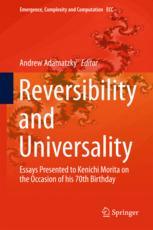

Most ebook files are in PDF format, so you can easily read them using various software such as Foxit Reader or directly on the Google Chrome browser.
Some ebook files are released by publishers in other formats such as .awz, .mobi, .epub, .fb2, etc. You may need to install specific software to read these formats on mobile/PC, such as Calibre.
Please read the tutorial at this link: https://ebookbell.com/faq
We offer FREE conversion to the popular formats you request; however, this may take some time. Therefore, right after payment, please email us, and we will try to provide the service as quickly as possible.
For some exceptional file formats or broken links (if any), please refrain from opening any disputes. Instead, email us first, and we will try to assist within a maximum of 6 hours.
EbookBell Team

4.7
46 reviewsThis book is a tribute to Kenichi Morita’s ideas and achievements in theoretical computer science, reversibility and computationally universal mathematical machines. It offers a unique source of information on universality and reversibility in computation and is an indispensable book for computer scientists, mathematicians, physicists and engineers.
Morita is renowned for his works on two-dimensional language accepting automata, complexity of Turing machines, universality of cellular automata, regular and context-free array grammars, and undecidability. His high-impact works include findings on parallel generation and parsing of array languages by means of reversible automata, construction of a reversible automaton from Fredkin gates, solving a firing squad synchronization problem in reversible cellular automata, self-reproduction in reversible cellular spaces, universal reversible two-counter machines, solution of nondeterministic polynomial (NP) problems in hyperbolic cellular automata, reversible P-systems, a new universal reversible logic element with memory, and reversibility in asynchronous cellular automata.
Kenichi Morita’s achievements in reversibility, universality and theory of computation are celebrated in over twenty high-profile contributions from his colleagues, collaborators, students and friends. The theoretical constructs presented in this book are amazing in their diversity and depth of intellectual insight, addressing: queue automata, hyperbolic cellular automata, Abelian invertible automata, number-conserving cellular automata, Brownian circuits, chemical automata, logical gates implemented via glider collisions, computation in swarm networks, picture arrays, universal reversible counter machines, input-position-restricted models of language acceptors, descriptional complexity and persistence of cellular automata, partitioned cellular automata, firing squad synchronization algorithms, reversible asynchronous automata, reversible simulations of ran